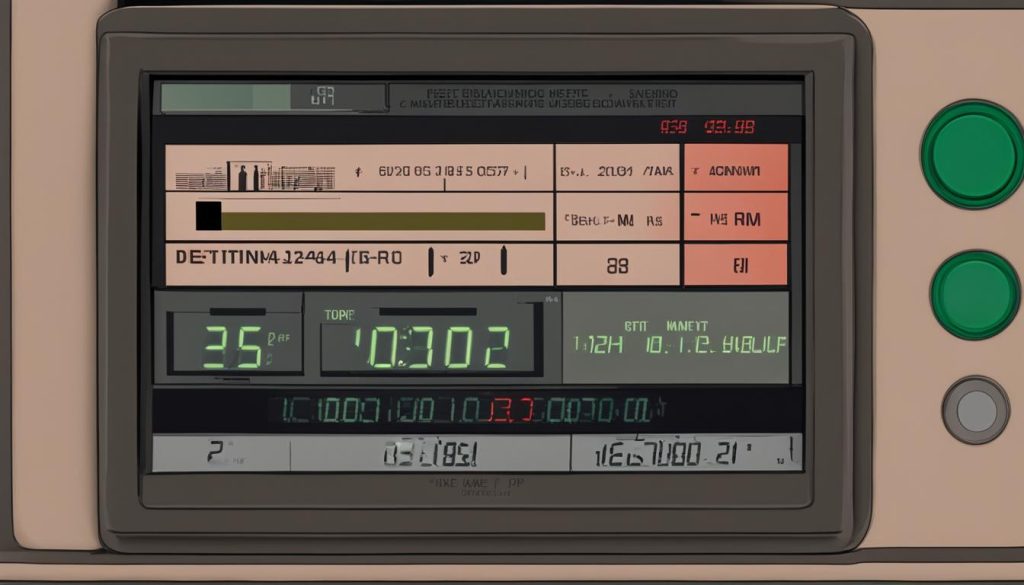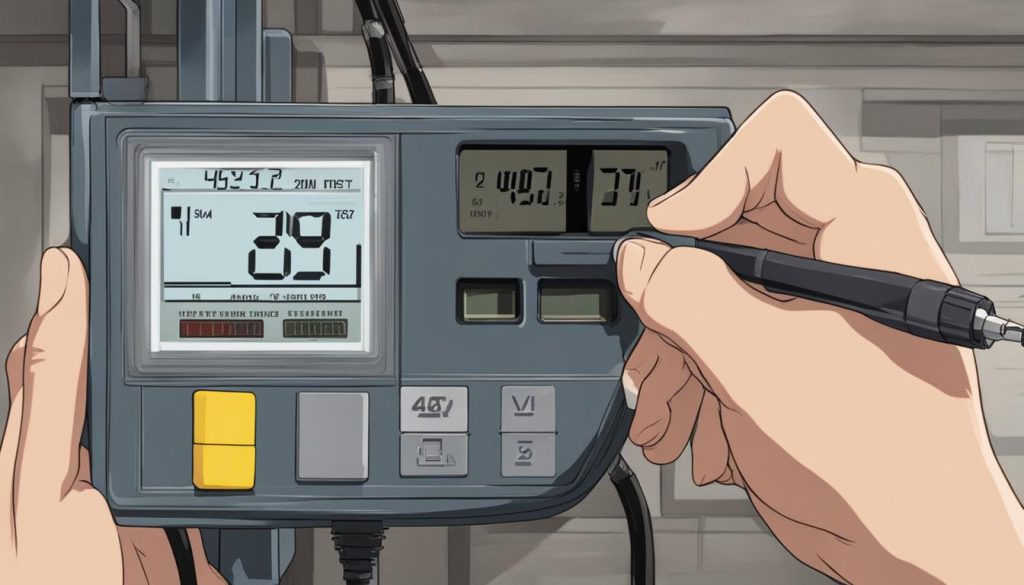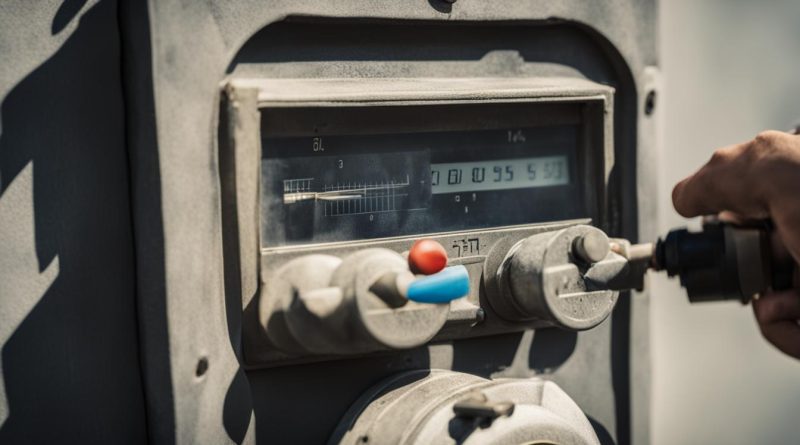Accurate Electricity Meter Reading Guide
If you’re looking to take control of your energy consumption, accurate electricity meter reading is essential. By following the proper techniques, you can ensure that your utility bills reflect precise usage and avoid any discrepancies.
In this comprehensive guide, discover essential tips for reading different types of electricity meters accurately. We’ll cover everything from understanding various meter types to practical tips for accurate readings.
Key Takeaways
- Accurate electricity meter reading is key to maintaining transparency in utility billing.
- Understanding different types of electricity meters is vital before diving into the meter reading process.
- Proper positioning, reading intervals, and using meter reading apps can guarantee accurate meter readings.
- Regular meter readings help you stay in control of your energy usage and ensure accurate billing.
Understanding Different Types of Electricity Meters
Before diving into the meter reading process, a basic understanding of the various types of electricity meters is necessary. It will come in handy while reading the meter accurately.
There are mainly three types of electricity meters widely used in the UK:
| Type of Electricity Meters | Description |
|---|---|
| Digital meters | Digital electricity meters display usage in numbers on an LCD screen or digital displays, making it simple to read. |
| Analog meters | Analog electricity meters have a spinning wheel and displays usage through a series of dials. Reading analog meters requires more effort as it involves reading several dials at different angles and adds them up for an accurate reading. |
| Smart meters | Smart meters are the latest addition to the UK’s technology landscape. They digitally display usage and automatically send meter readings to the energy provider. It eliminates the need for manually giving meter readings and helps keep track of energy consumption. |
While reading a digital meter, note all the digits from left to right, and do not ignore or exclude any preceding zeros. Also, keep an eye on the units of measurement, whether it’s in KWH or KW.
Reading an analog meter involves reading the dials, starting from the right-hand dial, progressing to the left. Read the dial that the pointer is currently pointing and record the number on the corresponding dial on the reading. If the pointer falls between two numbers on a dial, always record the smaller of the two.
Smart meters are effortless to read, as they offer a digital display of usage, and most smart meters are configured to provide usage information in near real-time. Typically, the energy supplier collects the data automatically, and the customer can view it online or via an app to keep track of their energy usage.

Tips for Accurate Meter Readings
After understanding the type of electricity meter you have, it’s essential to know how to take accurate meter readings. By implementing these tips, you can confidently submit your meter readings and rely on billing accuracy.
Proper Positioning
The location of your meter can affect the accuracy of the reading. Ensure you have good lighting to read the display clearly. Clear any debris or objects obstructing the meter display and keep it clean to avoid any misreading.
Reading Intervals
Reading your electricity meter regularly ensures that you have an accurate record of your consumption. Set a reminder to read your meter at the same time each day/week/month to get a consistent reading of your energy usage.
Advantages of Using Meter Reading Apps
Meter reading apps can make the process of reading meter readings convenient and straightforward. Some apps even have features that help you track and manage your energy consumption effectively. Using meter reading apps can save time and can provide a more accurate reading than a manual reading.
To submit your meter reading, follow the submission guidelines from your utility provider. Meter reading apps may also have a feature to submit the reading directly to the provider.

Conclusion
In conclusion, accurate electricity meter reading is crucial to maintaining transparency in utility billing. By being familiar with your meter type and following the tips provided in this guide, you can take control of your energy consumption and avoid any potential discrepancies. Regular meter readings and submission of meter readings ensure billing accuracy, preventing any unpleasant surprises on your energy bill.
It’s always advisable to keep a record of meter readings for future reference. This can help you track your energy consumption, monitor usage patterns, and manage energy costs effectively. You can also consider using a meter reading app to simplify the process and make it more convenient.
Take charge of your energy usage and ensure accurate billing by following the tips and techniques outlined in this guide. By doing so, you can maintain control over your energy consumption and avoid any unpleasant surprises on your energy bill.
FAQ
How do I read my electricity meter accurately?
To read your electricity meter accurately, start by locating your meter and identifying whether it is a digital, analog, or smart meter. Follow the specific instructions for reading your meter type, which can usually be found on the meter itself or in the user manual. Ensure you note down all the digits or readings displayed on the meter, including any decimal points or zeros. Take regular meter readings at consistent intervals to keep track of your energy usage.
How do I read a digital electricity meter?
Reading a digital electricity meter is straightforward. Simply locate the digital display on your meter and note down the numbers displayed from left to right, including any decimal points or zeros. Some digital meters may have multiple screens or buttons to toggle between different readings, such as day and night rates. Refer to the user manual or instructions provided by your energy supplier for specific guidance on reading your digital meter accurately.
How do I read an analog electricity meter?
Analog electricity meters have rotating dials or mechanical displays. To read an analog meter, start from the dial on the far left and read the digits or numbers indicated by each dial. Note down the number closest to the pointer or needle on each dial. If the pointer is between two numbers, always take the lower number. Proceed to the next dial and repeat until you have recorded readings from all the dials. Be careful with round dials that turn clockwise and dials that turn anticlockwise, as they may require different methods of reading.
How do I read a smart meter?
Smart meters have digital displays that cycle through different information, such as current usage and total energy consumption. To read a smart meter, navigate through the menu options using the buttons or touchscreen display. Look for the section that displays your energy usage data, and note down the relevant readings. Some smart meters may also have the option to submit your readings directly to your energy supplier using built-in communication capabilities or through a dedicated mobile app.
Can I submit my meter readings online or through an app?
Yes, many energy suppliers provide online portals or mobile apps that allow you to submit your meter readings electronically. These platforms offer a convenient way to ensure accurate meter readings and eliminate the need for manual submission. Simply log in to your energy supplier’s website or download their official app, navigate to the meter reading section, and enter the relevant readings. This method helps streamline the billing process and reduces the chances of errors or discrepancies in your energy bills.
Are there any meter reading apps available for accurate readings?
Yes, numerous meter reading apps are available for smartphones and tablets, making it easier to maintain accurate meter readings. These apps often utilize the device’s camera to scan the meter display, automatically recognizing and recording the readings. Some apps can even sync the captured data with your energy supplier’s systems, ensuring seamless and precise meter readings. Check your device’s app store for meter reading apps recommended by your energy supplier or search for popular options with positive user reviews.




